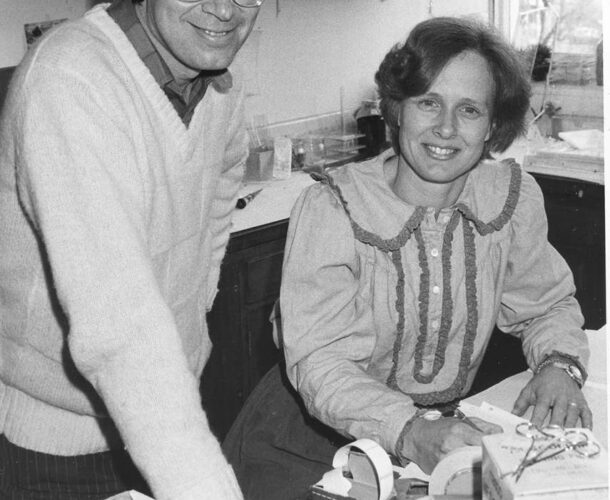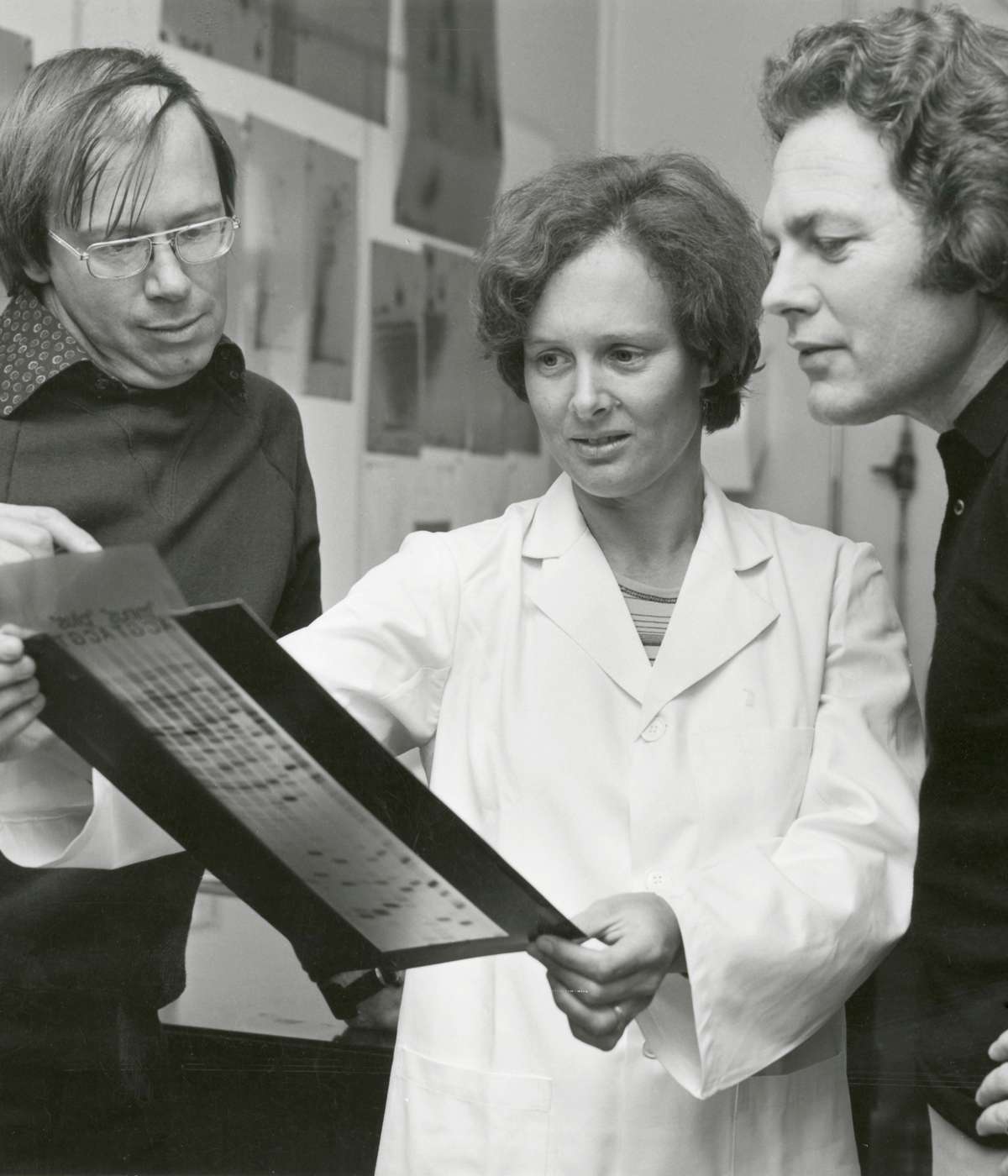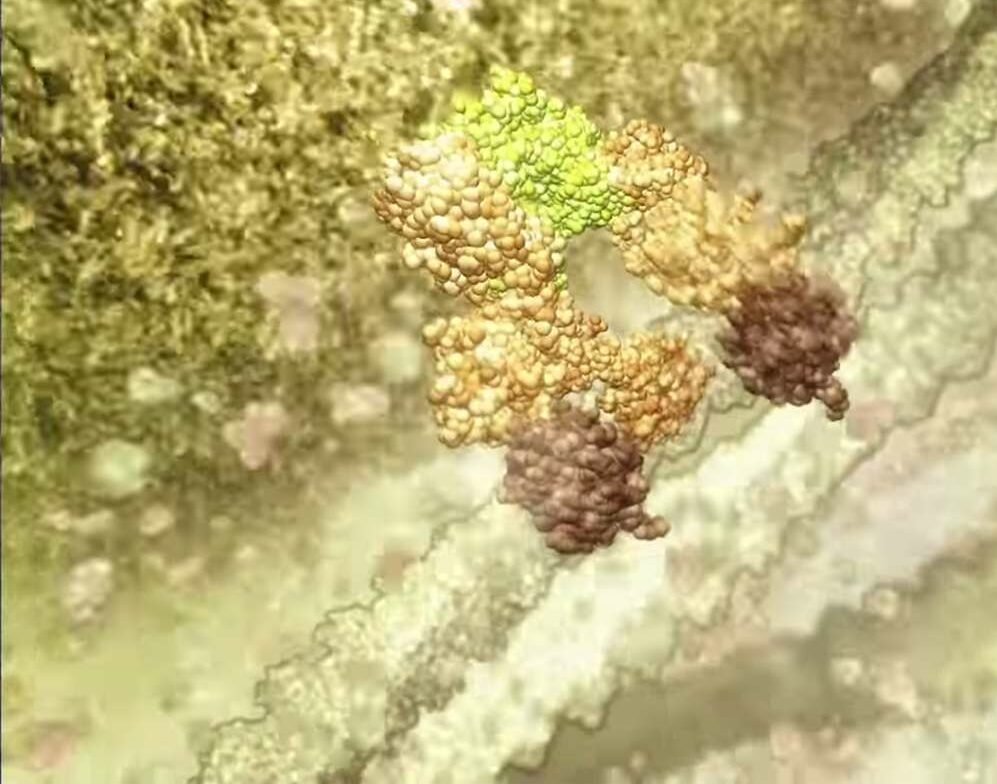Professor Jerry Adams and Professor Suzanne Cory have spent 10 years investigating the DNA rearrangements that allow antibody production by healthy B cells. But what goes wrong with the DNA of these cells that transforms them into cancer cells? Addressing this question leads to discoveries that underpin a new understanding of cancer.
Implicating MYC
Adams and Cory lead a team that includes Dr Ora Bernard, Dr Elizabeth Webb and PhD students Professor Steve Gerondakis, Associate Professor Lynn Corcoran and Dr Mick Graham to investigates DNA rearrangements, called chromosome translocations, in human Burkitt’s lymphoma and mouse plasmacytomas, both cancers of B cells. In 1983 they are amongst the first in the world to discover that the chromosome translocations typically seen in these tumours involve a known cancer-provoking ‘oncogene’ called MYC. They discover that rare mistakes in the rearrangements of antibody genes in normal B cells place the MYC gene next to DNA sequences that normally drive expression of antibody genes. Cory and Adams suspect that permanently switching on MYC is enough to drive uncontrolled cell division, leading to cancer.
Proving MYC is the culprit
Although MYC had been discovered at the scene of the crime, was its translocation sufficient to cause Burkitt’s lymphoma? To test this possibility, Cory and Adams elect to exploit a new technique developed by Americans Professor Ralph Brinster and Professor Richard Palmiter. When a DNA segment mimicking the MYC translocation seen in Burkitt’s lymphoma is injected into mouse eggs, they find in studies with Dr Alan Harris in 1985 that this ‘MYC transgene’ reliably triggers lymphoma development. This confirms the MYC translocation as the primary cause of Burkitt’s lymphoma, and the models developed by Adams, Cory and Harris remain in use by cancer researchers around the world, 30 years later. Furthermore, the findings on the MYC translocation advanced the view that many of the DNA alterations found in tumours have contributed to cancer development.
Investigating other oncogenes
Having successfully established the link between MYC and Burkitt’s lymphoma, Cory and Adams’ team shift their attention to other translocations involved in lymphoma and leukaemia. Notably, his includes a gene dubbed ‘BCL-2’, implicated in human follicular lymphoma. Investigations on BCL-2 by PhD student Professor David Vaux are to open a new avenue of research for the team, namely studies of how impaired cell death contributes to cancer development.





